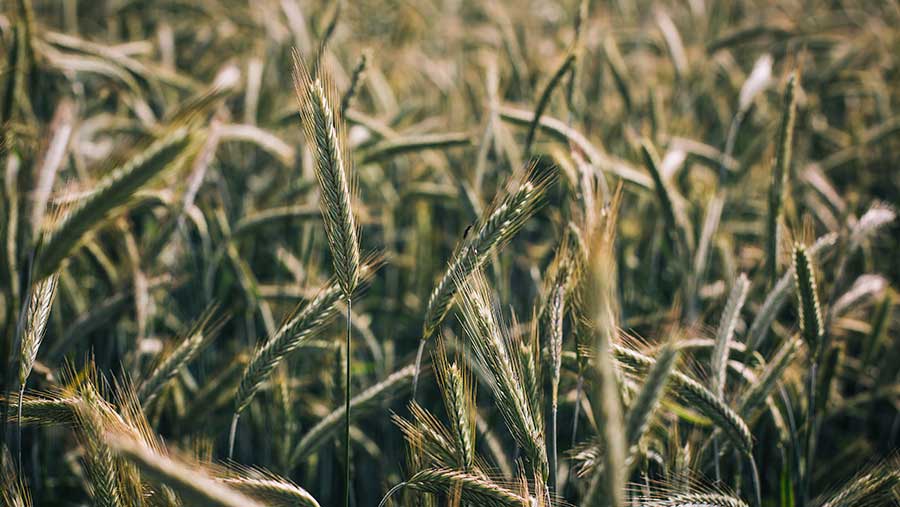Advertiser content
Hybrid rye area poised for growth in the UK
 © KWS UK Ltd
© KWS UK Ltd As cereal growers look to future-proof their rotations against environmental and economic challenges, hybrid rye is becoming an increasingly compelling option, especially with the introduction of high-performance varieties.
While the planted crop area in the UK has remained stable at around 50,000ha, Rory Hannam, product manager for oilseed rape, oats, peas and rye at KWS UK, believes the crop has the potential to dramatically increase in the coming years, due to its low input costs, flexibility and strong returns.

Rory Hannam © KWS UK Ltd
“Hybrid rye can be grown for either grain or wholecrop and has a huge untapped potential,” he says.
“While the planted area has remained fairly static, the market for hybrid rye has grown in size, primarily driven by an increase in anaerobic digestate (AD) plants.”
Demand for hybrid rye from the animal feed sector is now also rising, Rory adds.
“While wheat has long been the dominant feed source in the UK, hybrid rye is proving just as effective, with lower input requirements making it a more cost effective and sustainable feed option.
“It’s becoming increasingly clear that hybrid rye can provide the same, if not better, performance as wheat with a smaller environmental footprint.”
Reducing carbon footprint
The need to reduce the emissions resulting from crop production, while maintaining good levels of crop output, is becoming more important.
Rory points out that KWS trials and growers’ experience show that hybrid rye can deliver high yields with significantly lower nitrogen inputs from improved nutrient scavenging
“Fertiliser requirements can be nearly half that of a second wheat, which is likely to require around 220kgN/ha when grown for feed.
Hybrid rye typically requires around 120kgN/ha, saving 100kgN/ha, and the variety KWS Tayo shows the potential to cut this by a further third.
“One trial in Norfolk saw KWS Tayo produce the same 10.84t/ha yield from 80kgN/ha and 120kgN/ha fertiliser regimes, underlining the potential for hybrid rye to help make major savings in the amounts of seed, fertiliser, handling, transport, packaging, time and energy compared to other crops.”
Flexible and adaptable
“Yields of 10-13t/ha is commonplace, with many growers finding that hybrid rye outperforms wheat and barley as a second or third cereal,” explains Rory.
“Harvested earlier than wheat, it ticks many boxes in terms of flexibility. It can also help mitigate risk in situations where growing oilseed rape is becoming increasingly challenging or where producing wheat and barley economically is difficult due to inconsistent yields.”
With weather extremes becoming more frequent, characterised by very wet winters followed by dry, hot conditions in spring and summer, hybrid rye offers a resilient solution that holds significant appeal for growers, he adds.
“The crop’s extensive, deep rooting system copes well with dry conditions while its aggressive growth habit means that it moves through stem elongation faster than any other cereal.
“Requiring less agrochemical inputs than other cereals, hybrid rye utilises nitrogen very efficiently without compromising yields. It also has a 25% – 33% lower water requirement than wheat and will thrive in conditions where wheat and even barley may struggle with drier conditions.”
A new variety
New on the Descriptive List for autumn 2025 sowing, KWS Emphor marks a significant step forward in hybrid rye performance, combining top-end yield potential with low risk of ergot infection and high drought tolerance.
“KWS Emphor is our highest-yielding variety and delivers a best-in-class agronomic package,” says Rory.
“It blends the yield potential of Tayo with the stress tolerance and ergot resistance of Serafino, making it a very reliable option.”
According to 2024/25 AHDB Descriptive List figures, KWS Emphor delivers 104% of control yields, a brown rust score of 6, a specific weight of 76.2kg/hl and a Hagberg of 229.
With a straw length of 130cm, it also offers good standing ability.
“From our trials across drought-prone sites in Germany, KWS Emphor has emerged as the most drought-tolerant hybrid rye we’ve bred for the UK. That makes it particularly relevant for UK growers facing variable rainfall and increasing spring moisture deficits,” he says.
Perhaps most significantly, KWS Emphor also leads the KWS portfolio for ergot resistance, thanks to enhanced PollenPLUS® technology which ensures superior pollen production and faster glume closure.
“In samples taken from across six different locations in Germany, KWS Emphor recorded the lowest percentage of ergot contamination, just 0.3%, outperforming not only our own portfolio but also the main competitor varieties. That gives farmers and end users huge confidence in the crop’s quality.”
Continued innovation
Ongoing development in hybrid rye breeding is set to bring even greater agronomic flexibility, with short types and new wholecrop-specific lines in the pipeline, explains Rory.
“Shorter-strawed hybrids with reduced PGR requirements are being trialled.”
With KWS Emphor leading the current generation of hybrids and more innovation to come, Rory believes hybrid rye’s role in UK rotations is set to expand.
“Whether you’re looking for a resilient break crop, a low-input feed grain, or a high-yield wholecrop option, hybrid rye has something to offer.
“As the economics of cereal production tighten and environmental goals come into sharper focus, it’s a sensible choice that deserves more attention.”
Provided by
KWS is one of the world's leading plant breeding companies combining 165 years of heritage with leading edge technology and a commitment to develop and deliver varieties with the best yields, disease resistance, physical traits and resistance to abiotic stress.
